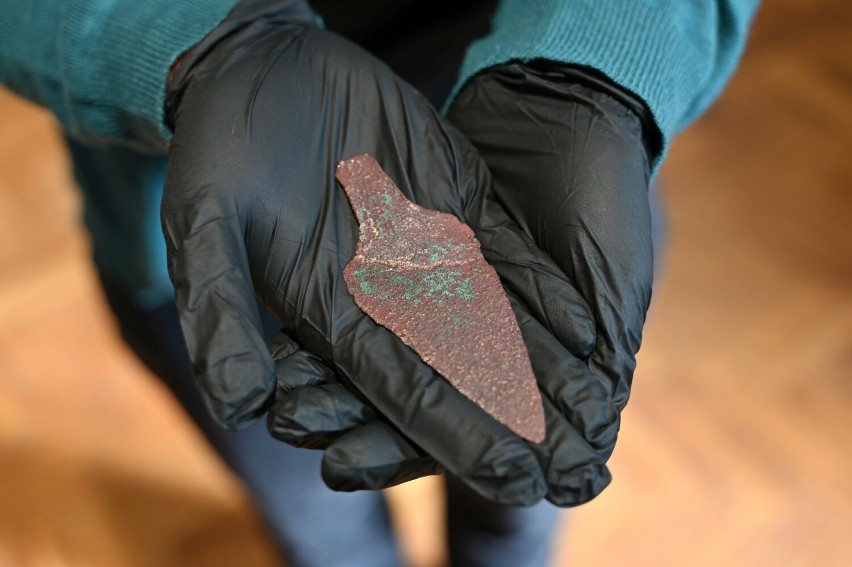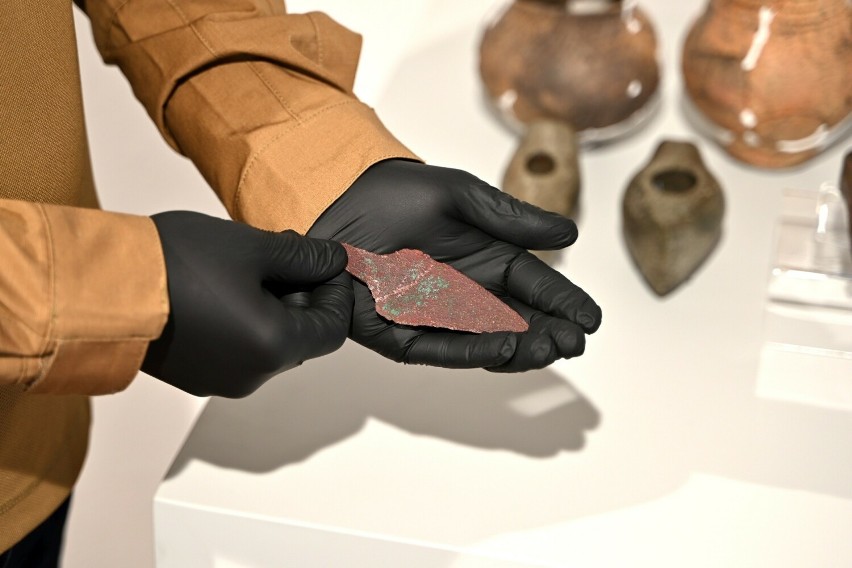Detector discovery of a unique 4,000-year-old copper dagger in Poland
Categories: Nálezy nejenom s detektorem kovů ve východní Evropě
Last November, detectorist Piotr Gorlach discovered a beautifully preserved copper dagger from the 3rd millennium BC in a forest near Jaroslaw in southeastern Poland. It is the oldest dagger ever discovered in the Carpathian Voivodeship. According to archaeologists, copper objects were extremely rare in the area.
Piotr Gorlach, who searches with his metal detector with the permission of the Subcarpathian Heritage Institute in Przemysllu and is also a member of the "Historyczno-Eksploracyjnego Grupa Jarosław" detector association, was searching for military objects from the World Wars that day. But he had no luck and decided to go home. But as it happens, on the way to the car he had an extraordinary signal...
"I had already decided to stop searching that day. I left the detector on out of habit. At some point, a signal sounded. When I dug up the forest dirt, I saw a flat metal object covered with a green patina. I quickly realized that I was dealing with something much older than the World War I and World War II military items that I was looking for in this area," Gorlach described the moments of the find, adding that he subsequently contacted the conservator of monuments and archaeologists from the Kamienica Orsettich Museum in Jaroslaw.
The 105 mm long flat blade was cast in the shape of a classic flint dagger. Dr. Marcin Burghardt from the Jarosław Museum dated the dagger to the second half of the third millennium BC: "This is a period of enormous changes in the Polish lands related, among other things, to the change of the main raw materials for the production of tools. In place of flint tools, commonly used in the Stone Age, there is an increasing use of metalproducts, which herald the transition to the next period - the Bronze Age," explained Dr. Burghardt, adding that in the new era, tools, ornaments and weapons were made from bronze, copper and tin alloys.
The dagger from Korzenica, however, is cast from copper: "So it predates the development of bronze metallurgy," noted Dr Elżbieta Sieradzka-Burghardt, an archaeologist from the Museum in Jarosław. "In the third millennium BC, objects made of copper were extremely rare, so only people of the highest social status could afford them. There is no doubt that the dagger is not a local product," she added.
"Although the dagger from Korzenica is only 10.5 cm long, compared to other similarIt is already a large dagger, which shows how valuable metal products were in that period. It is worth noting the characteristic shape, which is reminiscent of contemporary flint daggers," the archaeologist said, adding that the copper blade probably originated in the Carpathian Basin or the Ukrainian steppe.
The unique dagger is not the first archaeological relic found by members of the Jaroslaw Detectorist Association, as Dr. "In total, they have already donated several dozen small archaeological finds to the museum," he said, adding that he appreciates the museum's developing cooperation with the detectorists.
Roman Němec
Sources: naukawpolsce.pl, jaroslaw.naszemiasto.pl, scienceinpoland.pl



The article is included in categories: